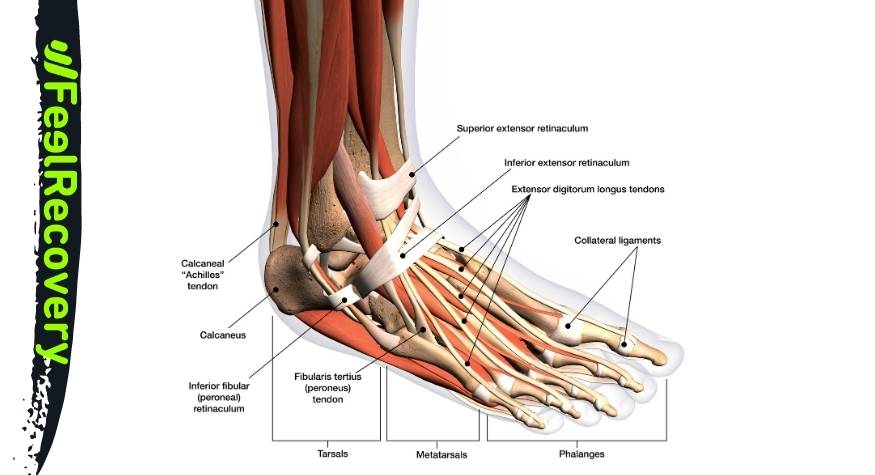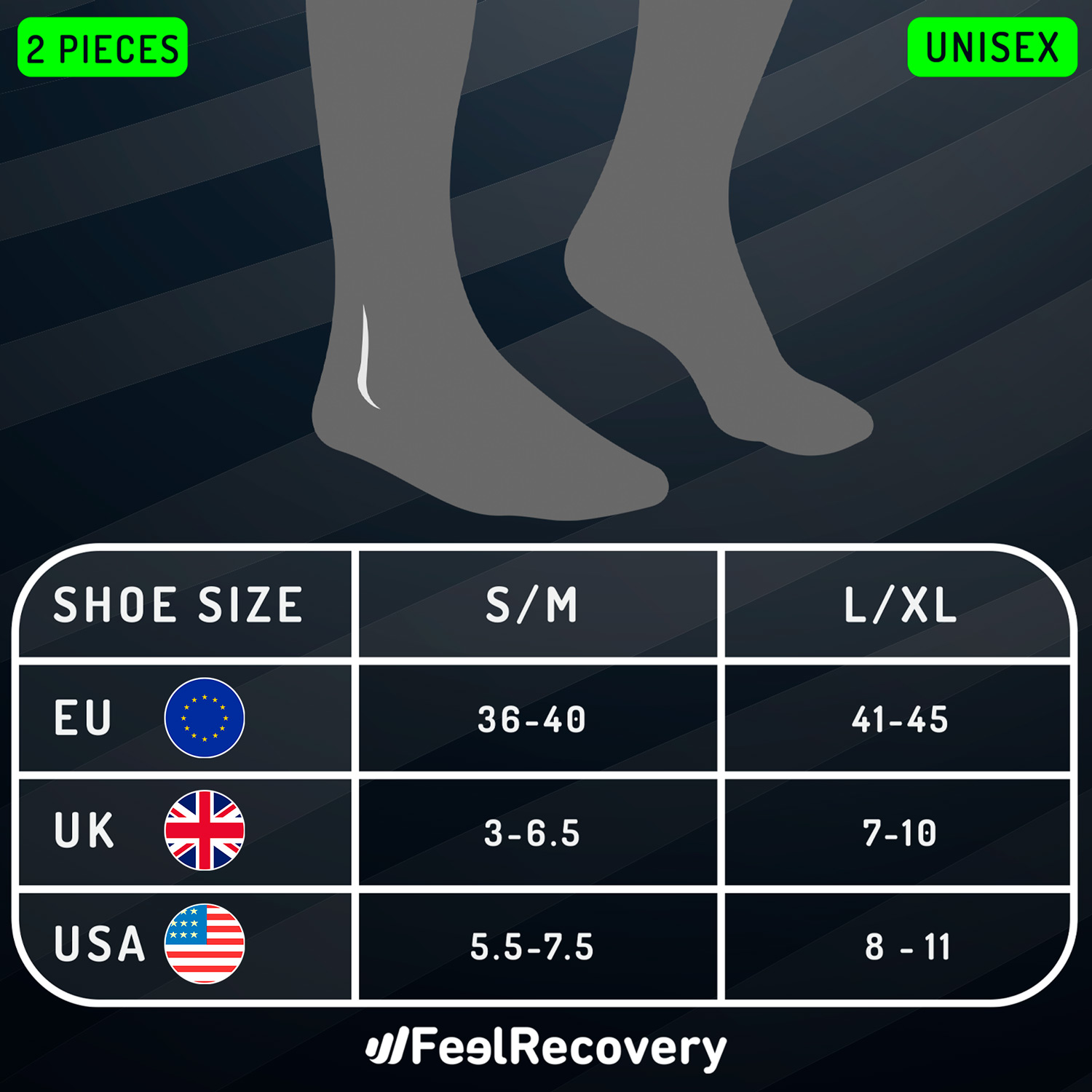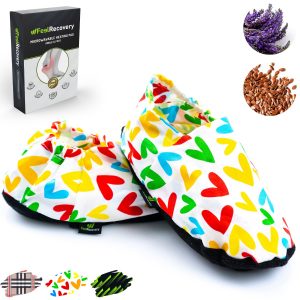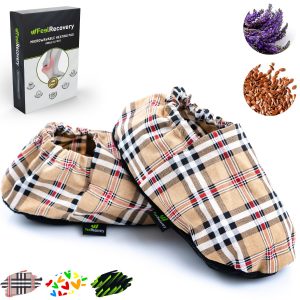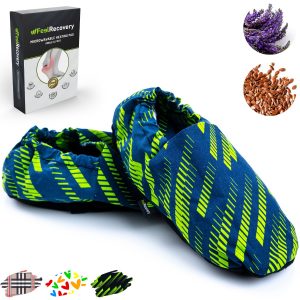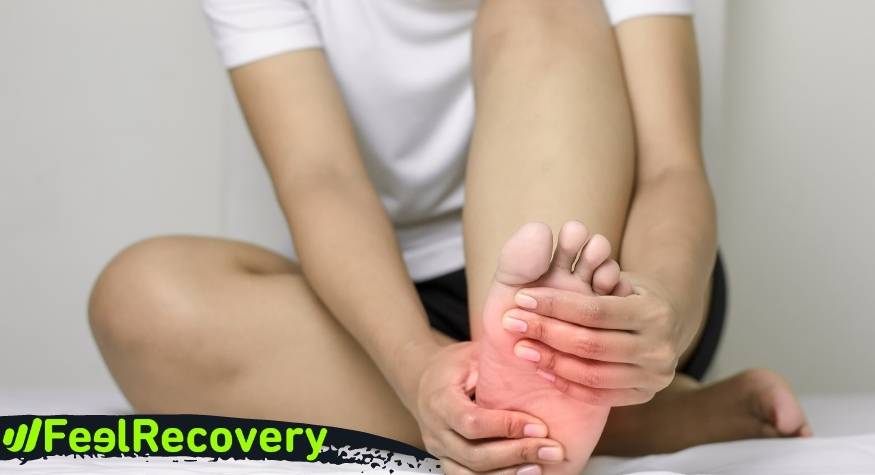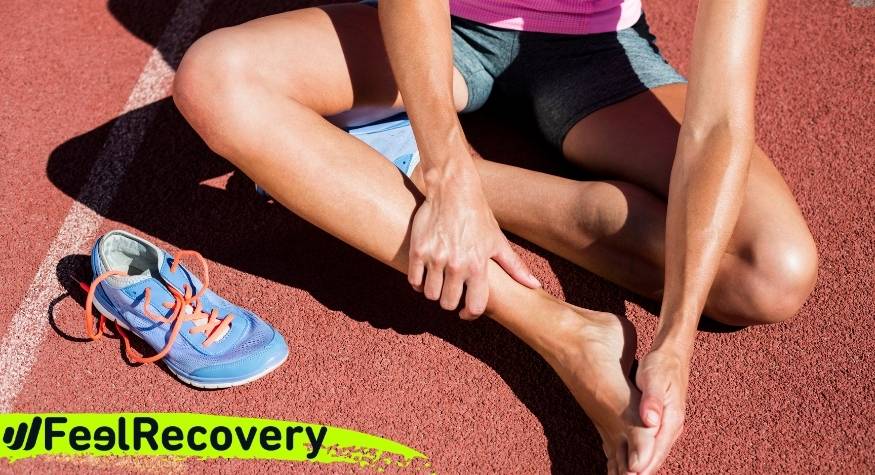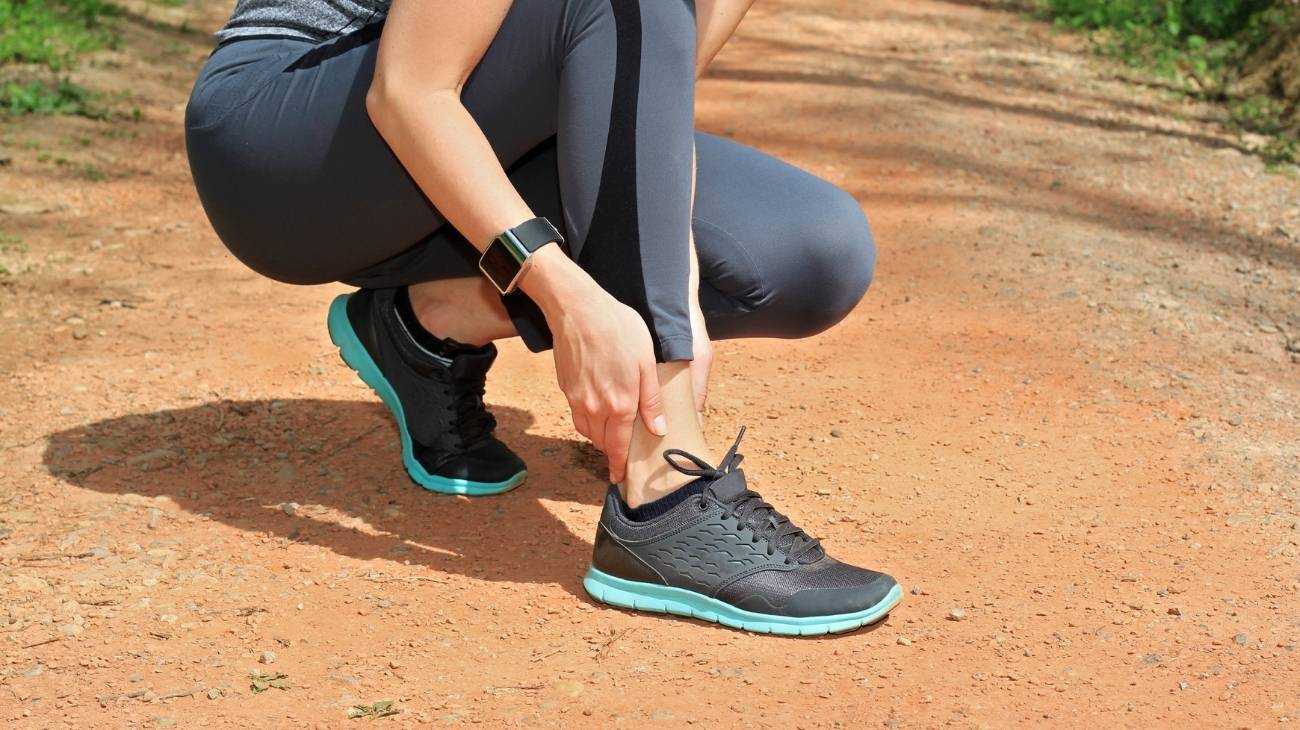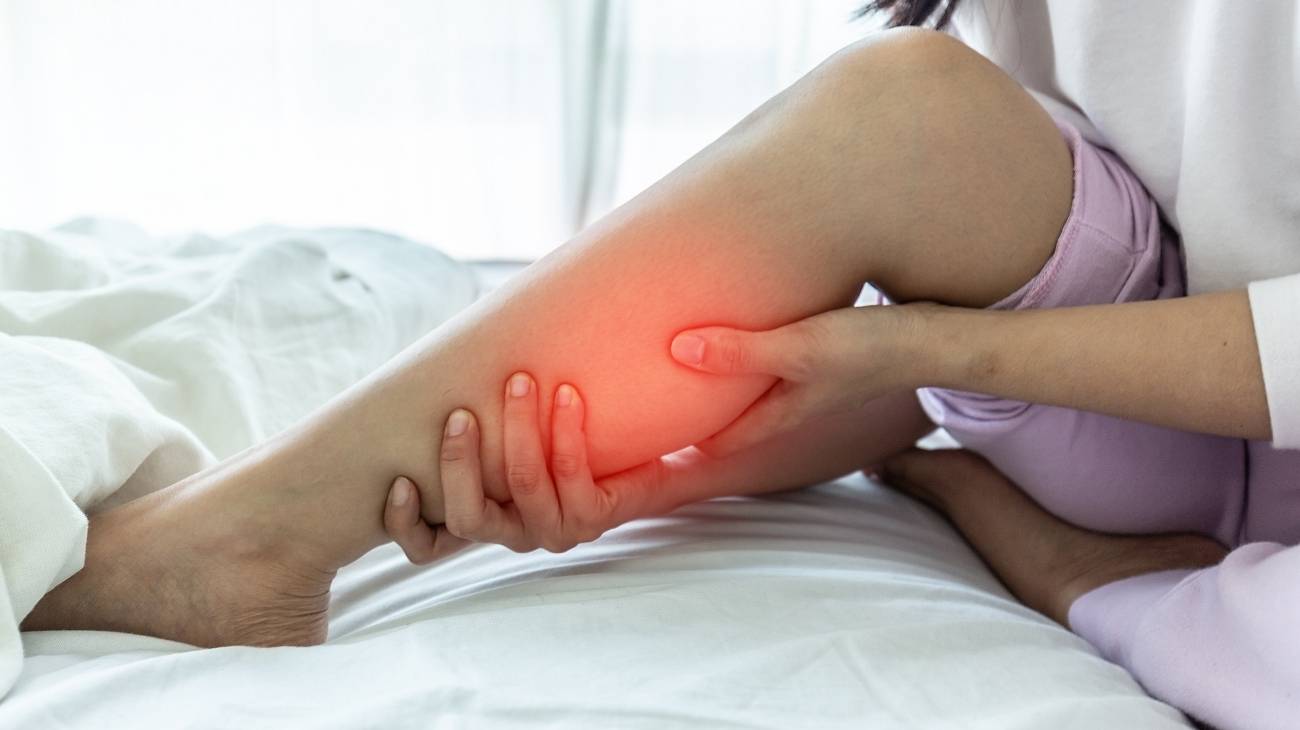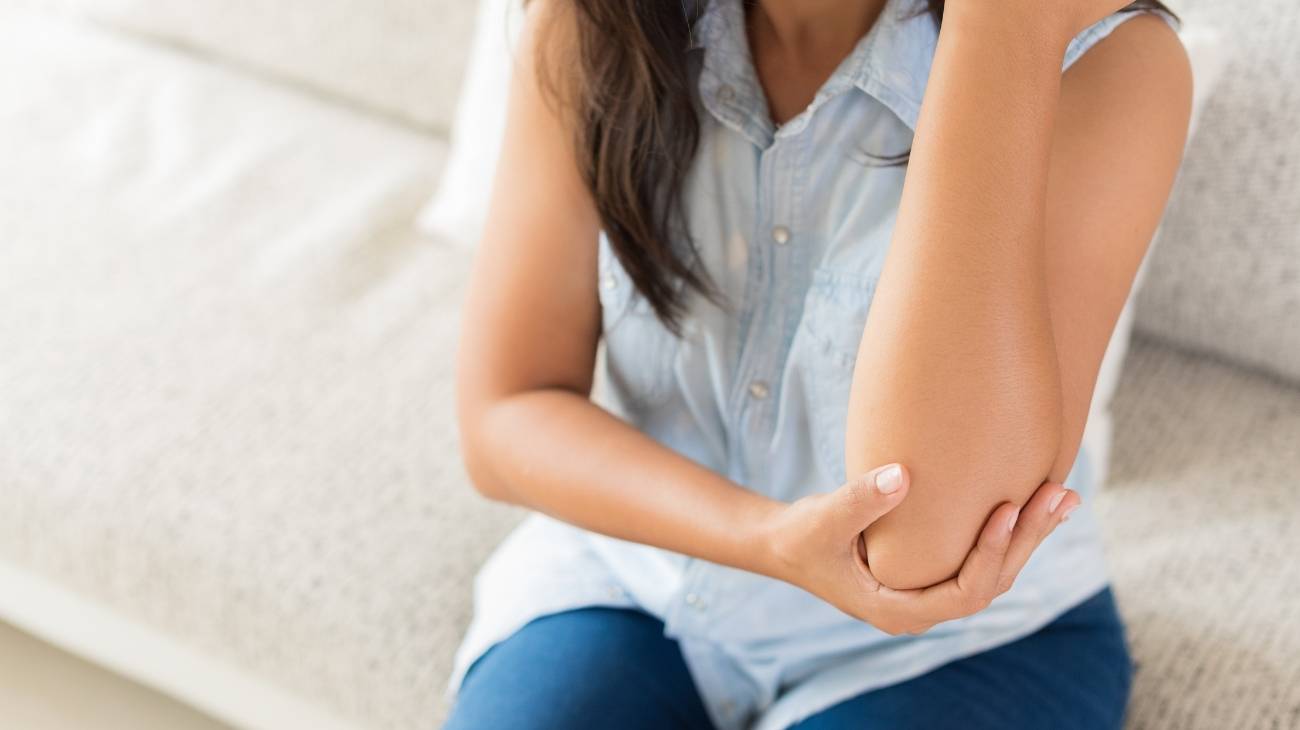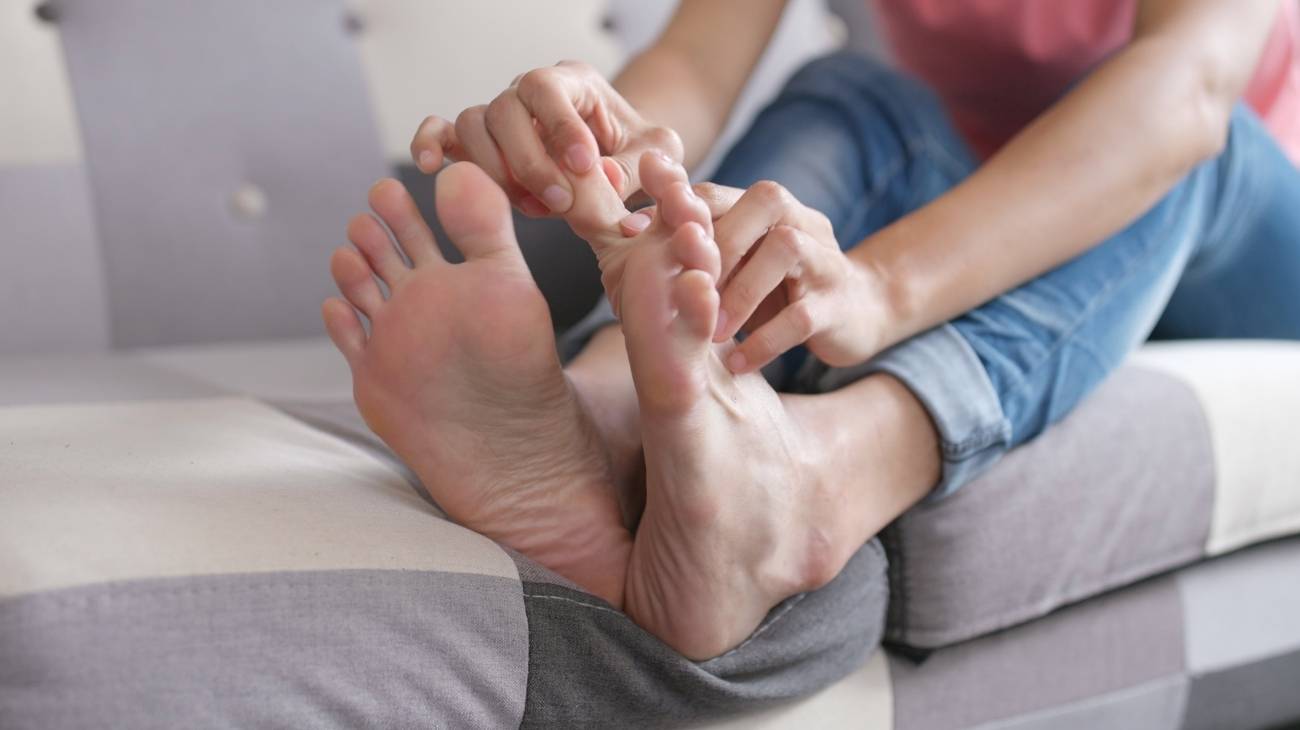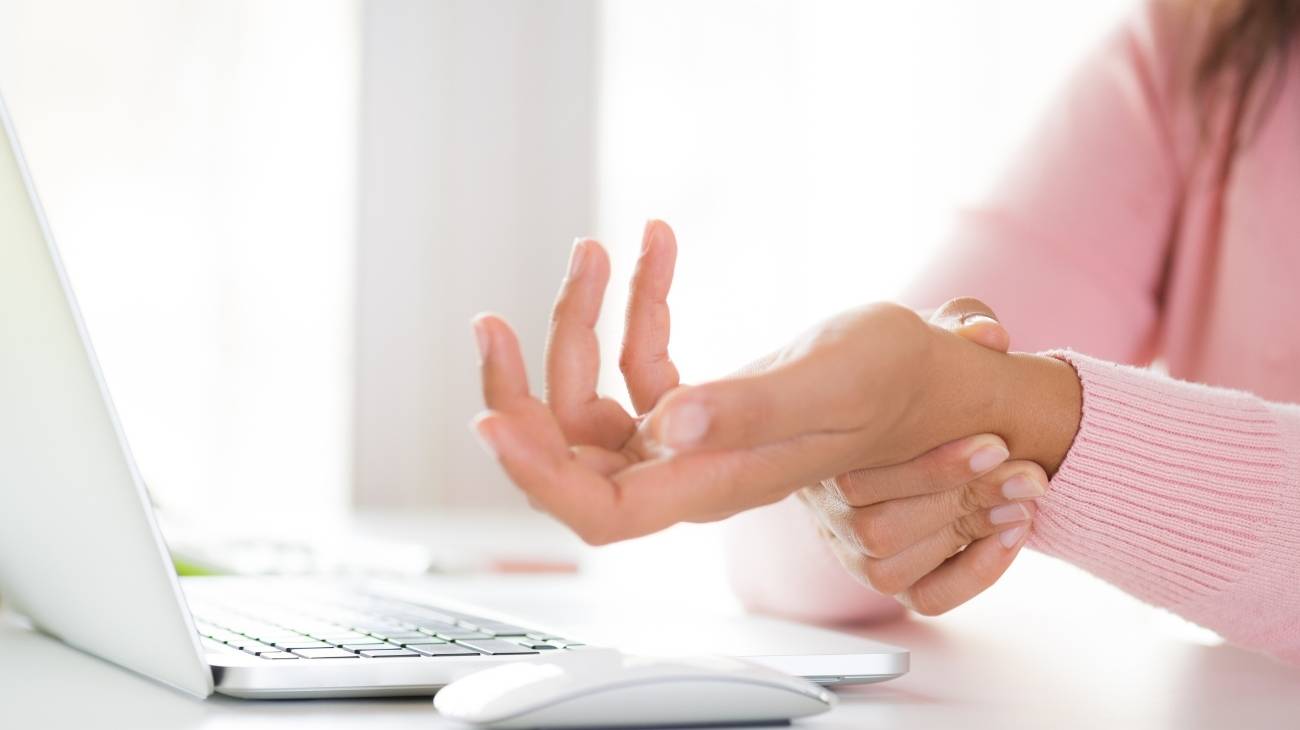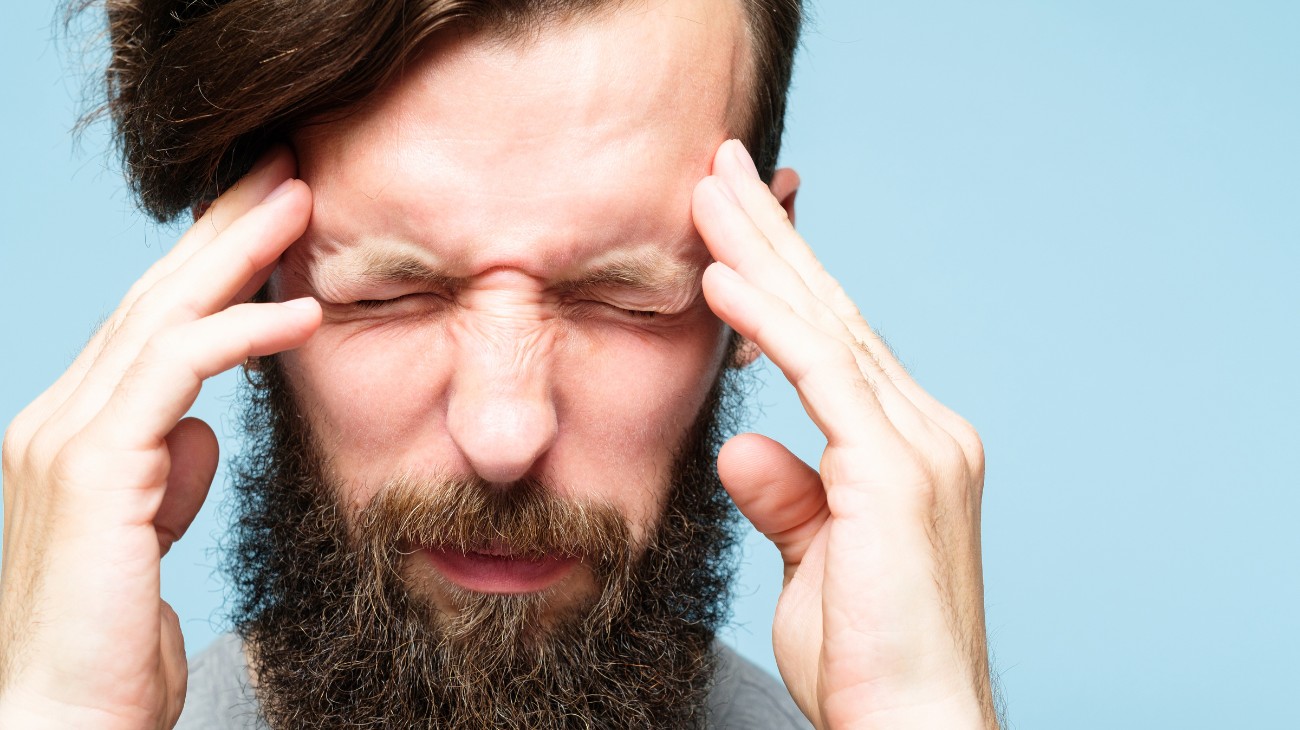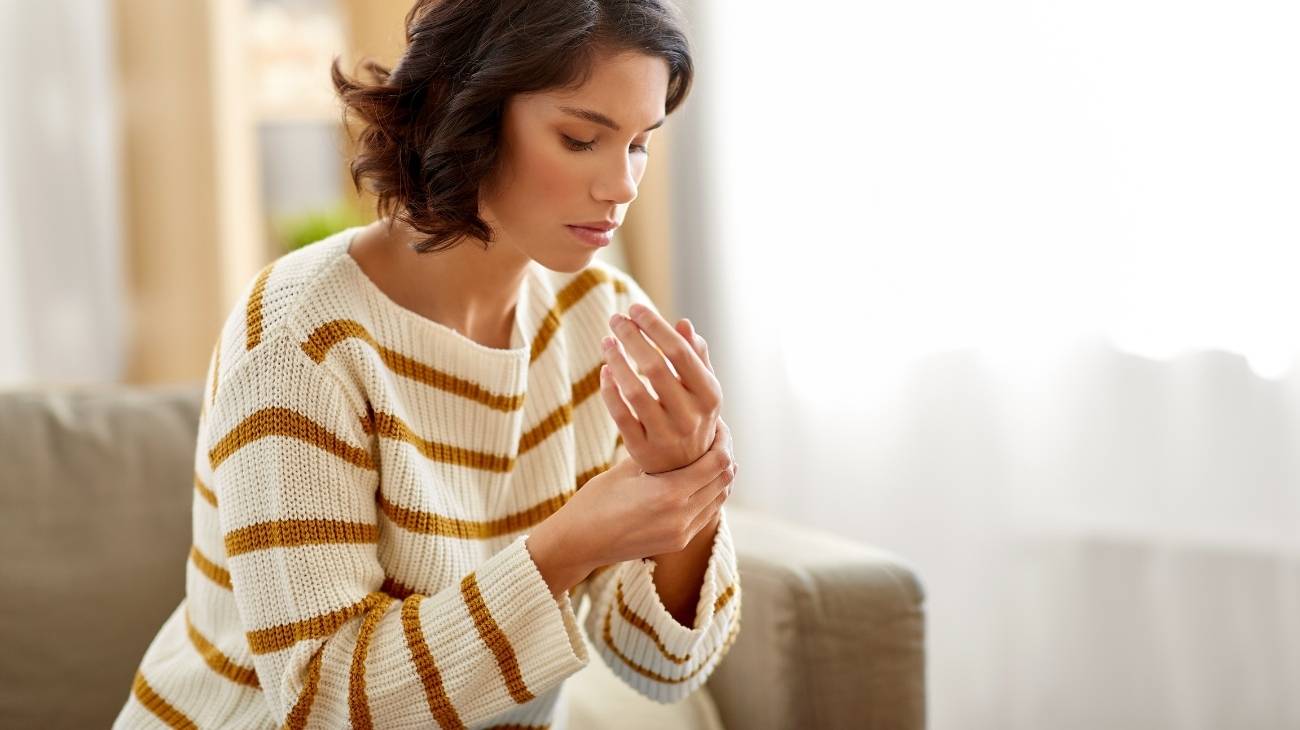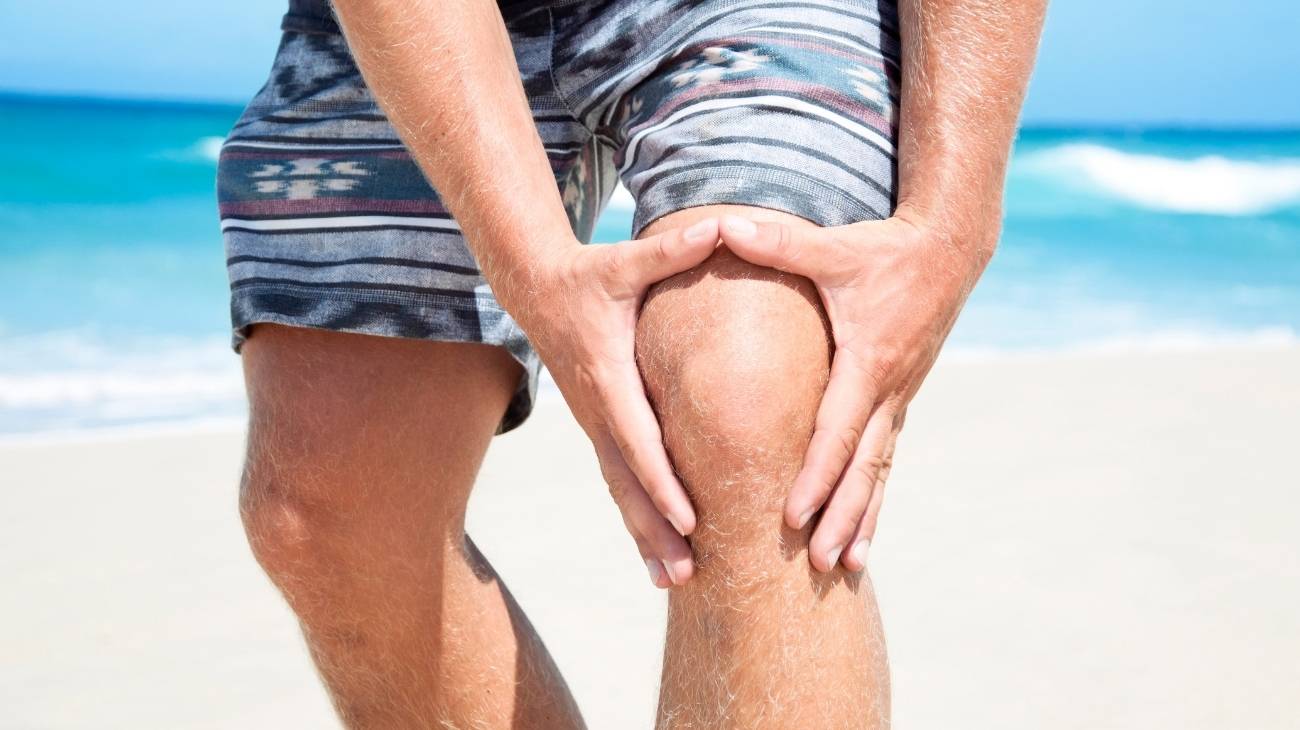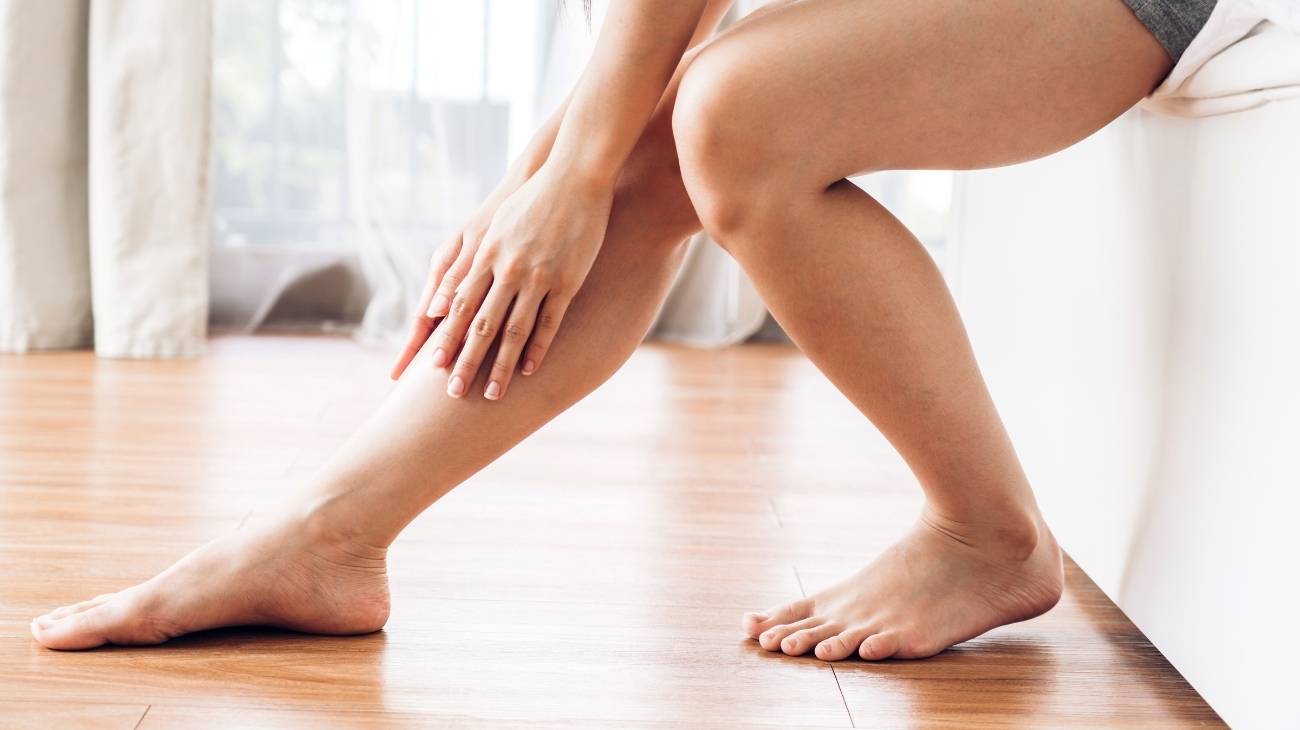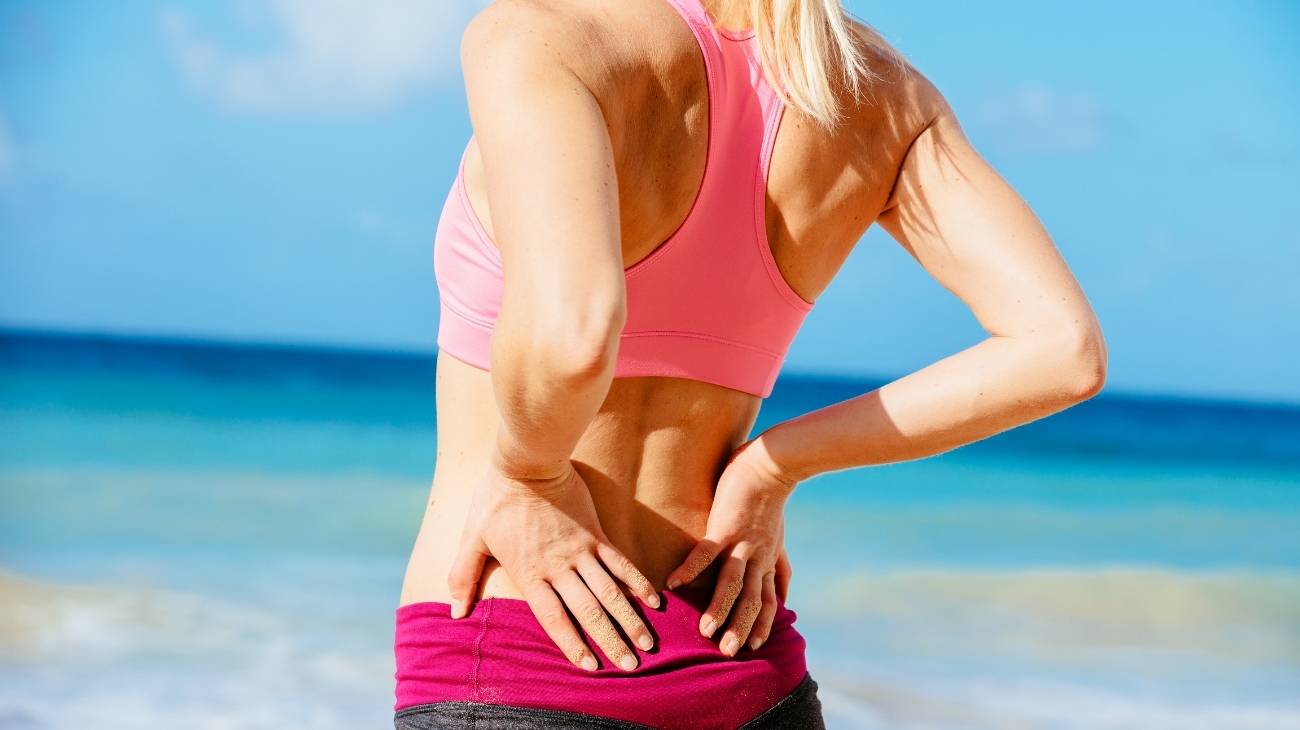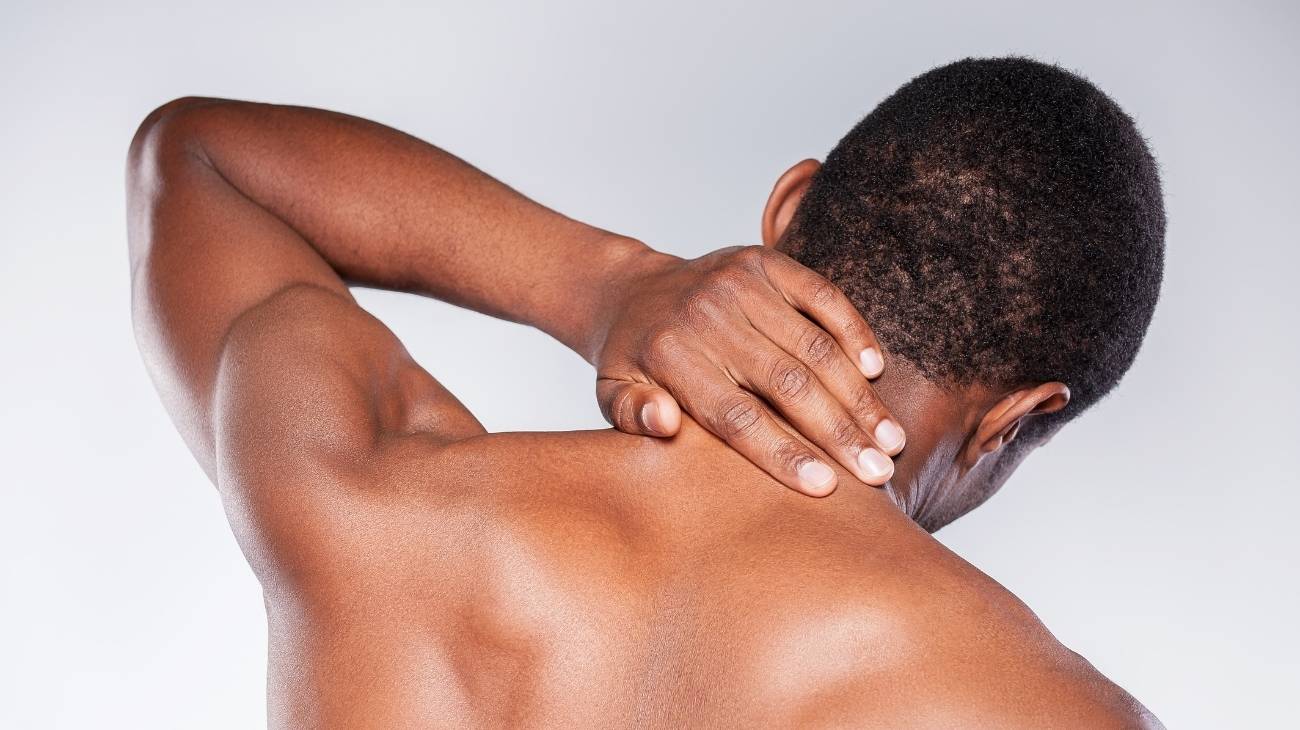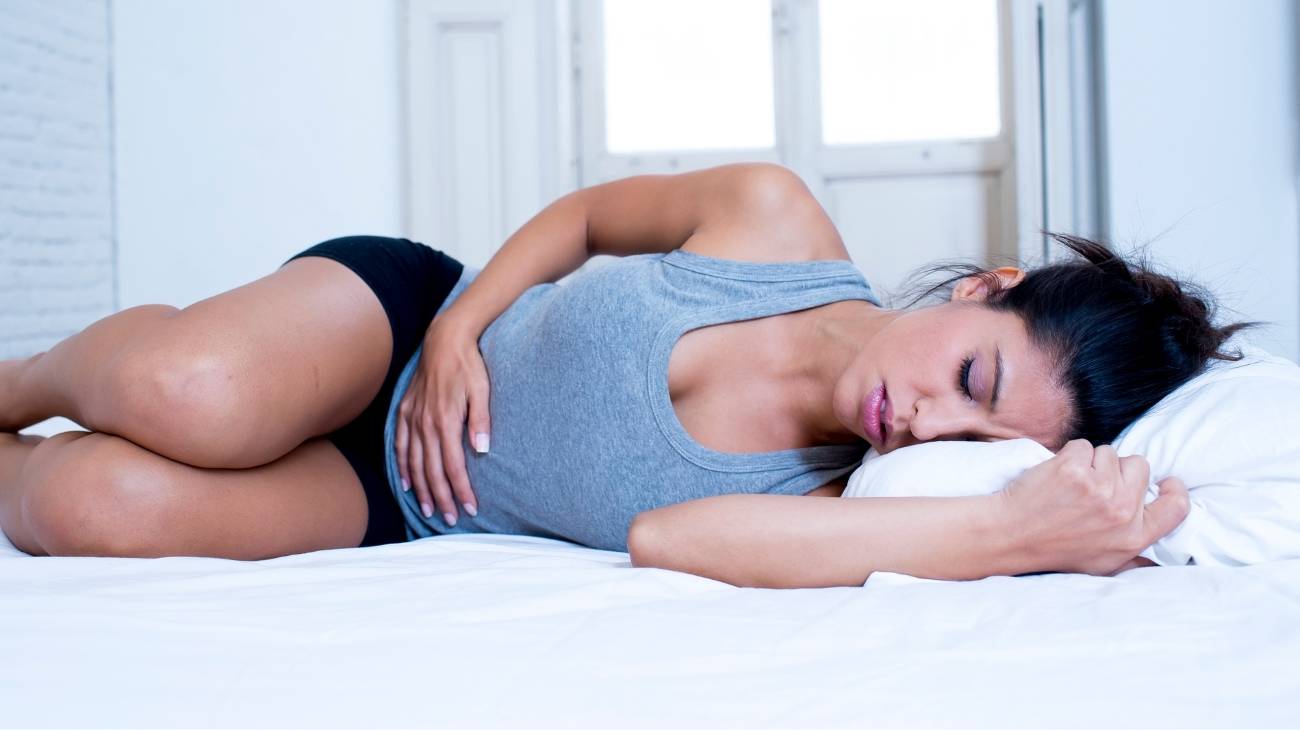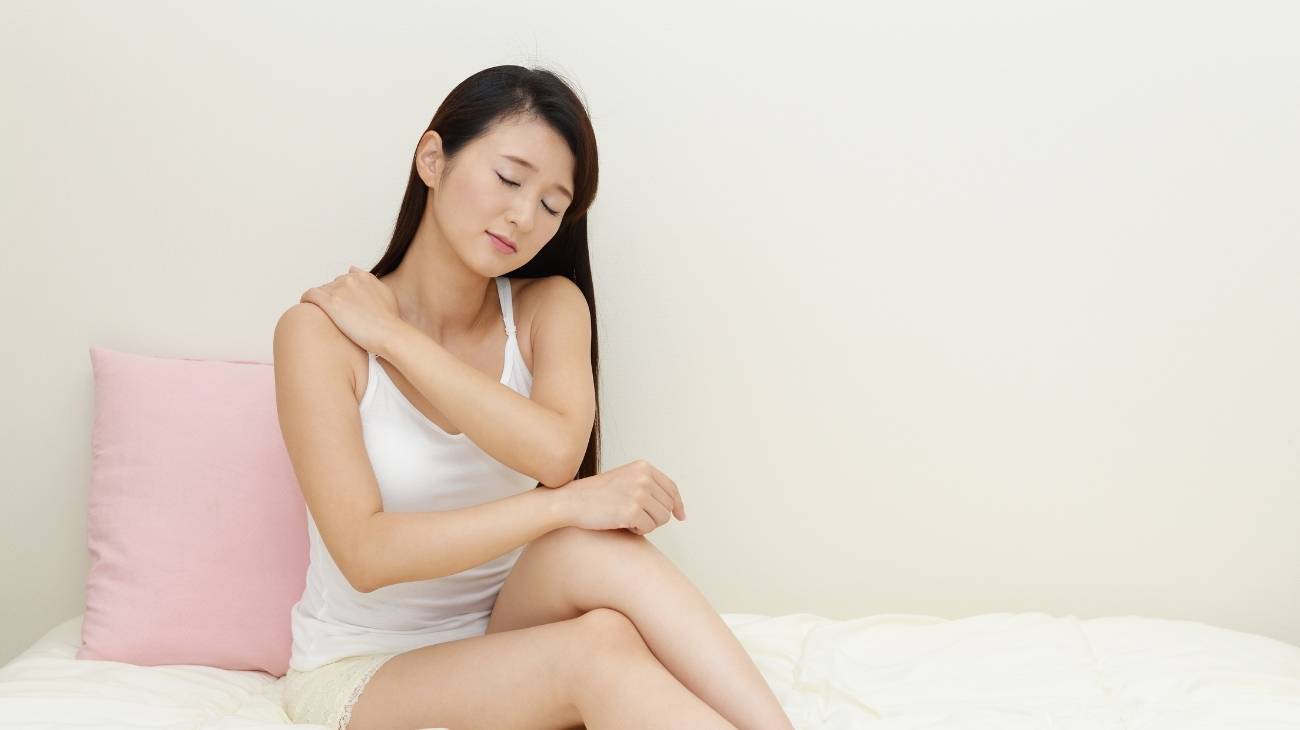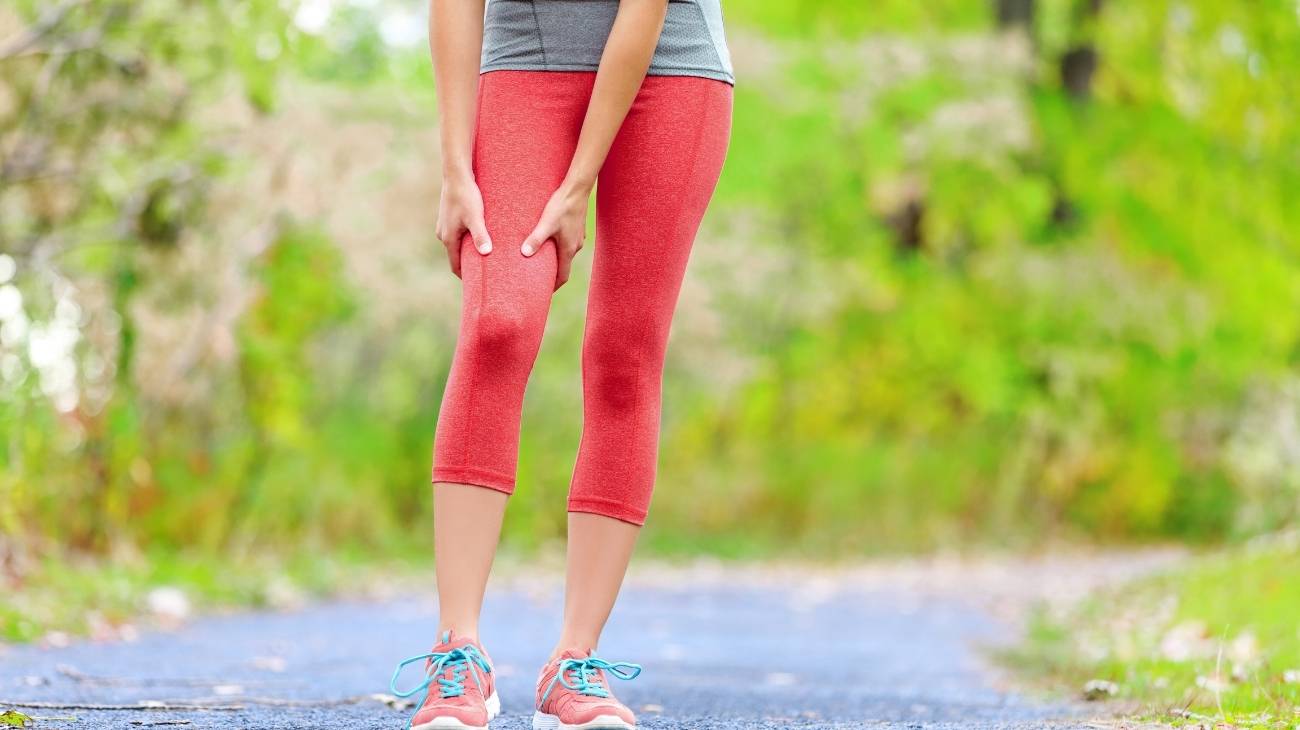- What is foot pain and how to identify it?
- Best products for foot pain relief
- What are the causes of foot and ankle pain?
- What kind of diseases can cause pain in the feet?
- What are the symptoms and types of pain that make us think we have a foot injury?
- How can we relieve foot and leg pain through complementary and non-invasive therapies?
- How to apply the RICE therapy step by step to reduce foot and ankle pain?
- How to prevent future foot, ankle and leg pain?
- Why should we avoid pills and injections to relieve pain in the sole of the foot?
Foot pain relief is one of the most demanded remedies on a daily basis by thousands of people. Our feet support our body and take both internal and external shocks, so they suffer twice as much. It is therefore natural that they often hurt.
In this post we will discover exactly what foot pain is and how it is identified, what diseases, pathologies and circumstances cause it directly and indirectly and how it is aggravated, you will learn the symptoms that accompany foot pain in an injury and, of course, the therapies that exist to soothe this discomfort.
What is foot pain and how to identify it?
Foot pain includes a number of sensations, the main one being discomfort. This pain is usually hollow, but it can be either dry or stabbing, as it is true that the feet include an immense number of pathologies that we can suffer from and each one has its own symptoms.
The pain is easy to identify as, with few exceptions, it does not usually extend beyond the ankle. However, it is possible to confuse it with pain in the ankles. In fact, pain in the feet can be caused by pain in the ankle joint.
In general, if we have a foot injury, we will notice that the instep hurts, especially when resting, there may also be discomfort in the area of the sole behind the toes, the heel is also affected, the feet are often swollen and we may feel weakness when we start walking (numbness, tingling, numbness, etc.).
Best products for foot pain relief
Bestseller
-
2 Ankle Compression Sleeve (Black/Gray)
$19.95 -
2 Ankle Compression Sleeve (Green/Navy)
$19.95 -
2 Ankle Compression Sleeve (Pink/Bordeaux)
$19.95 -
Acupressure Mat and Pillow (Black/Gray)
$49.95 -
Acupressure Mat and Pillow (Green/Navy)
$49.95 -
Acupressure Mat and Pillow (Pink/Bordeaux)
$49.95 -
Acupressure Pillow (Black/Gray)
$29.46 -
Acupressure Pillow (Green/Navy)
$29.46 -
Acupressure Pillow (Pink/Bordeaux)
$29.46 -
Foot Massage Roller for Plantar Fasciitis (Black)
$19.95 -
Foot Massage Roller for Plantar Fasciitis (Green)
$19.95 -
Foot Massage Roller for Plantar Fasciitis (Pink)
$19.95 -
High Density Foam Roller for Muscle (Black/Gray)
$29.95 -
High Density Foam Roller for Muscle (Green/Navy)
$29.95 -
High Density Foam Roller for Muscle (Pink/Bordeaux)
$29.95 -
Ice Massage Roller Ball (Black)
$39.95 -
Ice Massage Roller Ball (Green)
$39.95 -
Ice Massage Roller Ball (Pink)
$39.95 -
Ice Pack for Foot - Cold Therapy Socks (Black)
$24.95 -
Ice Pack for Foot - Cold Therapy Socks (Green)
$24.95 -
Ice Pack for Foot - Cold Therapy Socks (Pink)
$24.95 -
Microwavable Heated Slippers (Hearts)
$24.95 -
Microwavable Heated Slippers (Oxford)
$24.95 -
Microwavable Heated Slippers (Sport)
$24.95 -
Microwaveable Heating Pad for Pain Relief (Hearts)
$19.95 -
Microwaveable Heating Pad for Pain Relief (Oxford)
$19.95 -
Microwaveable Heating Pad for Pain Relief (Sport)
$19.95 -
Pack 2 In 1 Foam Roller High + Soft Density (Black/Gray)
$29.95 -
Pack 2 In 1 Foam Roller High + Soft Density (Green/Navy)
$29.95 -
Pack 2 In 1 Foam Roller High + Soft Density (Pink/Bordeaux)
$29.95 -
Soft Density Foam Roller for Recovery (Black)
$29.95 -
Soft Density Foam Roller for Recovery (Green)
$29.95 -
Soft Density Foam Roller for Recovery (Pink)
$29.95 -
Sport Compression Socks (1 Pair) (Black/Gray)
$19.95 -
Sport Compression Socks (1 Pair) (Green/Navy)
$19.95 -
Sport Compression Socks (1 Pair) (Pink/Bordeaux)
$19.95
What are the causes of foot and ankle pain?
Undoubtedly, there are many factors that cause your feet to ache in one way or another, just as, as we will see later, there are also a number of pathologies that cause them.
Trauma, blows and falls
Taking a bad stride while doing sport, using your feet as a reflex action to avoid something falling to the ground, a box falling on top of you, a fall in a bad posture or on an object and, in general, any trauma can cause your feet to hurt.
From a simple momentary pain to a cracked bone, a torn ligament, a sprain, etc. All these points and many others, which include trauma of one kind or another, will cause us to suffer from this ailment, albeit fleetingly.
Pain when running or walking
Any previous case in which the foot has not had sufficient rest will mean that we feel discomfort, more or less severe, when we move, no matter whether we do so quickly (running) or slowly (simply walking). The usual symptoms are pinching when stepping on the injured foot, support of a dislocated or fissured bone, a bad step, etc.
At rest or when resting
Foot pain at rest is usually caused by a bone pathology, an acute condition or one that has not healed properly and has become chronic. The other main reason is that there is a nerve problem, that a nerve has been affected and, therefore, the pain appears continuously.
If our feet hurt when we rest them, it can be due to practically all kinds of causes, whether bone or nerve pain, stress, exhaustion or wear and tear of the tissues (sprains, fasciitis, excessive running, overloading, etc.). In the morning or after a long time without moving, if we have our feet in a bad posture, we usually feel a pain when we rest them, although this will disappear quickly as we start to walk.
Metatarsalgia also stands out, with a really varied cause and which, in short, involves pain in the metatarsals, which are precisely the first bones that we rest on the ground when we stand up. On the other hand, there are topical problems, such as infections like athlete's foot, caused by dryness and cracking of the skin.
Flat or cavus feet
Feet with a different shape to their natural shape for standing, walking and carrying out any activity will mean that, in order to achieve this, we will have to either modify our stride or wear out one part of the foot more than the other. In both cases, the structure of the foot is modified, including the bones, which causes pain. It is a long process that ends up being chronic.
The good thing about this is that it can be treated from childhood with the right shoes or special insoles, so that in adulthood it does not have to be a problem and no pain or any other symptom is perceived.
Due to being overweight or during pregnancy
Weight gain has a direct impact on foot pain. In general, you will feel more tired, your feet will swell and ache, although it is more common for the symptoms to affect the ankles.
This is a logical scenario, as you are putting more weight on your feet than they are designed for. The solution is weight loss or, in anticipation, strengthening the most sensitive areas of your feet and legs with exercise and therapy.
Cold foot pain
Although the cold helps to numb our bodies, it is true that it can still hurt. And it is not necessary to be physically cold. There is an ailment that is caused by blood circulation problems and lack of mobility.
In the case of poor blood circulation, the foot loses temperature because less blood reaches it and the causes can be varied, such as poor posture, blood oxygenation problems, thrombi, neurological problems, etc... The common symptom is tingling or the sensation of the feet "falling asleep".
The main treatment lies in improving blood circulation, so that your foot and all its capabilities are in full condition. Ideally, physical activity should always be maintained so that the functions of its parts are not impaired or weakened.
Stress and emotional causes
It is not the most common cause, but it is true that emotional discomfort and not being able to cope with the day to day, influences our body to such a strange extent that our feet or legs may ache, although it is usually other parts of the body that are affected first.
Due to emotional stress, we can suffer muscular contractions in our feet without even noticing it and progressively causing pain. The generalised tiredness and discomfort produce what is known as tired feet, which is nothing more than an aggravated perception of both the physical discomfort that we notice together with the emotional pain that we feel and that we really notice throughout our body.
You have to work on the primary causes, which are psychological; only in this way will all the pain and other associated symptoms disappear. What you can do, of course, is to work on relieving the pain in the feet while working on the emotional problems.
Exercise and strenuous exertion
Any activity that puts stress on any part of the foot can lead to an episode of pain and other symptoms. We are talking about a sporting activity, a job at work or simply walking for longer than expected without adequate preparation.
We strain, especially muscles and tendons, which are the most affected areas. However, depending on the effort, it is possible to suffer a severe injury including a bone fracture, even if it is only a crack. Rest and a gradual return to activity, with the use of protection, will be essential to avoid relapses.
What kind of diseases can cause pain in the feet?
Undoubtedly, the complexity of our feet means that they can be affected by a number of pathologies, most of them being the cause of the pain that we can suffer. Therefore, we must diagnose the one we suffer from as soon as possible and treat it to eliminate the pain in our feet and, of course, the rest of the elements of its symptomatological picture.
Arthrosis or osteoarthritis
A rheumatic disease that consists of the wear and tear of the cartilage that cushions the joints. This affects both the ankle and the toes, which gradually become deformed. Obviously, this means that we have to modify our stride and change the support.
Osteoarthritis starts with mild discomfort and ends with severe pain that prevents mobility if not treated in time. You will also feel stiffness, swelling and even increase the amount of fluid in the area. Nails become thickened, ingrown, calluses appear, and even the skin of the foot changes colour.
Treatment should begin as soon as possible to avoid foot deformity, which is what ultimately worsens our lifestyle. Osteopathic exercises and the use of orthopaedic footwear will be necessary.
Arthritis
In this case, the joints become inflamed, depending on the type of osteoarthritis we suffer from, different structures such as bones, tendons or ligaments will be affected. Knowing the cause is fundamental, as it may be due to an infection or fracture, or deterioration of the joints.
To alleviate the pain in the feet due to arthritis, we must reduce the symptoms of this disease, which are loss of mobility, greater stiffness, increased temperature, etc. Depending on the type and degree of osteoarthritis, the treatment will be very diverse, ranging from drugs to small changes in lifestyle, exercises, use of splints, water therapies, thermotherapy, massages, etc.
Sprains
If you suffer a badly sprained ankle you are likely to feel pain radiating down to the foot. The ligaments are weakened and torn, the area becomes inflamed, the skin tone changes and the joint becomes stiff. The RICE therapy, which will be discussed below, is essential in this case, as it includes everything an injured foot might need: rest, healing support, natural analgesia and protection.
Fractures
When a bone in the foot is severely injured, starting from a subtle crack or including complete breakage of the bone structure, we suffer pain. Both the severity and the area affected influence the treatment and symptoms.
In a foot fracture, the pain is very strong, immediate and stabbing, almost total immobilisation of the area is required as well as rest for healing. Sometimes surgery is required, such as bone reconstruction with screws, rods or plates to maintain the correct position and for the bone to weld properly. Bruising, swelling, skin sensitivity and even deformity may also occur.
After the primary treatment, the patient will begin to walk with the help of crutches, the foot will remain immobilised and will gradually be supported without pain. Treatment is essential not only because a broken bone prevents you from leading a normal lifestyle, but also because it brings with it complications such as bone infections, nerve damage or arthritis.
Bone spur and osteophyte
A bone spur is a small deformity that appears at the edge of a bone, especially in the joints (in this case, between the tarsals of the foot). Although they can be asymptomatic, in the feet they usually do cause pain when walking and, over time, a certain loss of mobility due both to the friction between the bones, which are deformed, and to the pain they cause.
If this ailment becomes more serious, intervention will be required, which consists of filing the osteophyte, either surgically or by ultrasound, as well as the use of insoles and the application of cold.
Metatarsalgia
This is inflammation of the metatarsal, which is the area immediately before the toes, i.e. the first bone we rest on when we walk. It appears if you are used to jumping or running excessively, if you have a foot deformity or are prone to it, or if you wear unsuitable footwear.
It is not a serious pathology but it can be extremely painful, which is why we recommend immediate treatment to return to normal as soon as possible. This pain occurs in the support area of the foot, being intense and continuous and extending towards the toes, which may become numb.
Rest and the application of cold will give you the greatest relief from the symptoms. In addition, you will need to get into the habit of wearing shock absorbing insoles and orthopaedic footwear to allow recovery and prevent the problem from recurring.
Plantar fasciitis
This is inflammation of the plantar fascia, a thick tissue that runs along the sole of the foot connecting the heel and toes. When this occurs, you notice a shooting pain in the heel and the area around it, which reduces throughout the day but is aggravated again when you get up after sleeping or after a sports session.
The first thing you will need to do is to relieve the pain in your feet, for which we advise you to use thermotherapy. In physiotherapy you will learn how to stretch the plantar fascia and the Achilles tendon (there are also night splints for this) as well as strengthening exercises for the muscles.
Bursitis
Bursitis is the inflammatory disorder of the bursae, the sacs where the synovial fluid is stored, which is responsible for lubricating and facilitating the mechanical action between the bones as well as between the bones and the tissue system. Bursitis in the foot appears in the first toe (big toe) and in the heel, producing pain, which increases with movement, as well as stiffness and inflammation, which may be accompanied by redness.
Rest and cold are needed to numb the area, as well as protection for your daily life and for rehabilitation exercises.
Tendonitis
This is an injury to the Achilles tendon that occurs due to overuse, especially during sport or repetitive work. The pain appears in the ankle and spreads upwards, and is easy to identify. The pain is initially mild and worsens over time, and can be felt even if no activity is being performed. Occasionally, stiffness appears first thing in the morning.
It is a simple problem that is easily treated by resting and repositioning the tissues. Recovery will be quicker if blood pressure is kept low. The pain is easily eliminated with cold and if necessary see a physiotherapist for more specific treatment.
Bunions and corns
A bunionette is a bony bump that appears at the joint at the base of the 1st and 5th toes, when the tarsi slip out of place. The skin becomes tight, red and painful. A newly developed bunion does not cause too much of a problem, but the pain increases over time, as does the deformity.
Calluses appear due to rubbing between the toes, which causes more pain, the toe loses mobility and the area can end up swelling. Care and treatment of the skin is essential to maintain the position of the toe in place, the use of compression stockings is recommended so that the bunion does not worsen, if this happens it can lead to problems of bursitis or metatarsalgia.
Ingrown toenails
One side of the nail digs into the soft flesh, which causes a lot of pain, especially when rubbing, inflammation of the toe and redness. Sometimes, due to the wound itself, infection can appear, first at a topical level but, if left untreated, it could become osseous. This pathology is much more common if we have diseases that reduce blood flow.
Care is simple and is carried out at home, including hygiene, protection and a correct way of cutting the nails so that they do not become too short and become embedded in the skin as they grow.
Osteomyelitis
This is a bone infection, which occurs in two ways: through the blood or by extension, through infected tissue with which the bone is in contact. Injuries that leave the bone exposed would, of course, also be a direct cause.
Like any infection, this one is going to be painful, very painful in this case, as it is of the bony type and the area is constantly moving and rubbing. The area swells and increases in temperature, becoming reddened. In addition, as in other cases, we may develop a fever and feel exhausted.
Morton's neuroma
This consists of a thickening of the tissue covering a nerve in the foot, specifically the one located in the metatarsal, almost always between toes 3 and 4. The sensation is that you are stepping on a small stone or that your sock has folded up underneath you. This causes a sharp pain and burning in the metatarsal area. In many cases, the symptom picture extends and we see that burning, itching and numbness can also be felt in the toes.
This requires surgical intervention and the subsequent use of a wide-sole shoe. In any case, you should cease impact activities and, when you can resume them, do so gradually, with protection (compressive garments, customised insoles, etc.).
Raynaud's disease
Change in sensations in the toes due to limited blood flow. The feet are colder and change colour both naturally and when pressed, numbness, tingling or pain appear. When we manage to raise the temperature of the area, it throbbs, itches, swells and reddens.
Prevention, as well as treatment, includes reducing exposure to cold, either by clothing, heating, etc. Vasodilation, by means of thermotherapy, will be essential to normalise blood flow. There are drugs that are designed to block calcium channels but they also achieve this effect and are prescribed in more severe cases.
Paget's disease of bone
A rare disease that prevents the recycling of bone tissue. This means that we cannot replace old bone with new bone. The bone becomes more fragile and, in addition, the collection of tissues causes deformities. You are more prone to fractures and bone pain. In the legs, it is common to end up putting pressure on the joints, leading to osteoarthritis.
Diabetic neuropathy
Nerves are damaged because of diabetes, or rather because of high blood glucose levels. Depending on which nerves are affected, we will notice numbness in the legs and feet, as well as moderate to severe pain and blood vessel pathologies, as well as suffering from other unrelated symptoms. Fortunately, it is easy to prevent if we already know we have diabetes or, if we do, to prevent it from progressing, simply by keeping our blood glucose levels stable and on target.
Tarsal tunnel syndrome
This is a varied symptom picture caused by compression of the tibial nerve, medial plantar nerve or lateral plantar nerve in the area of the tunnels on the inner side of the foot. This can be caused by various reasons such as veins that are too thick, an internal inflammatory process, a sprain, having a valgus or flat foot, etc.
Tumours
Cancer and tumours cause foot pain to appear in different ways, together with other symptoms in the area such as inflammation, cracking, deformation of the toes, hardness, abnormal nails, etc. The most obvious case is hand-foot syndrome, caused by actions such as targeted therapy or chemotherapy. It causes intense pain in the sole of the foot, swelling, tightness, sensitivity to rubbing, tingling, redness and changes such as calluses, ulcers, hard skin and others.
Plantar warts
Plantar warts are bumps on the skin that appear after contact with the human papilloma virus. They are found in the most supportive areas of the foot. These warts can "grow inwards", which actually indicates that they are inside a callus that has formed. Both the callus itself and the wart, due to friction, become irritated, sensitive and painful. Occasionally, we see small black spots, which are blood vessels that have clotted.
Remember that warts are infectious, so you must maintain perfect hygiene and avoid wounds. It is easy for these warts to disappear with rest. However, if they start to spread or become painful, action should be taken using salicylic scrubs, injectables to boost the immune system or cryotherapy.
Haglund's deformity
The calcaneal bone grows benignly more than normal in its upper area. It is similar to a bunion or spur because, ultimately, there is undue rubbing and tightening of the tissues with pain, very focused swelling, redness, callus and inability to maintain daily activity. You will have to rest, wear specific footwear, possibly orthopaedic, receive shock waves or surgery as well as rehabilitation and exercise to avoid weakening the tissues in the area.
What are the symptoms and types of pain that make us think we have a foot injury?
Obviously, there are circumstances in which we will readily recognise that we have an injury. Others, however, may not be so simple. To be able to intuit it, there is nothing better than knowing what other symptoms, apart from the pain itself, accompany an injury.
Most common types of symptoms
When faced with a foot injury, you will find the following symptoms:
- Pain: Depending on the injury, all pain will be more or less intense. However, when we have recently injured ourselves, it is logical that this is the first and main element of the symptomatological picture that will be presented. It is normal for pain to appear immediately after an injury, although it is true that, depending on the injury, it may appear gradually, especially in cases of tissue exhaustion.
- Swelling: This is a fairly obvious way to tell if an injury has occurred. Feet can become swollen as a result of continuous strain, not just direct injury. However, if they become swollen, it is undoubtedly because our body is working against an ailment that we have to work for. It is normal for the ankle and instep to swell.
- Redness: This is not the norm except in the case of a high-impact injury but, of course, there are cases in which the foot or part of it may become red in accompaniment to the inflammation (the temperature will also increase).
- Haematoma: A haematoma is caused by circulatory problems but, obviously, if it is accompanying these symptoms it is just further evidence that you have suffered a blow and that the area is really affected and needs attention.
- Joint instability: If the injury is serious and occurs in a joint area, it will be unstable, either in the ankle or in the toe. Unless there is a fracture, this symptom disappears very quickly as soon as post-traumatic care is started.
- Reduced movement: It depends on the pain, the injury and the area involved, but, yes, movement will be reduced to a greater or lesser extent, as the foot is the support base of our body and an essential tool for movement.
- Stiffness: In addition to pain as such, another reason why we cannot move our feet on a regular basis is because they become stiff. This usually occurs in tendons and tissues that connect different elements, being different in composition to a muscle, which is much more resistant. It goes hand in hand with pain, decreasing with it and we will also notice it when we are "cold".
- Spasms: A clear indication of discomfort in the tissues or, worse still, a symptom of damage, albeit temporary, to a nerve.
Types of symptoms depending on the area
Knowing which part of your foot hurts, you can get a good idea of the problem you may have, and above all, consider whether the damage is linked to the following symptoms, which would be the most common.
- On the instep of the foot: This is an area which, on the one hand, suffers from swelling, tingling due to poor blood flow and very strong bone pain if it has suffered trauma.
- In the heel of the foot: Nerve pain is rare. It can be caused by bad stepping and overexertion in sport and is always a coarse and deep pain. As for the aesthetic problems of the area, we see that only skin damage occurs. On many occasions, this pain will appear for no reason, at rest. Loss of mobility is practically a symptom of bone problems. Acute pain is caused by tissue problems such as plantar fasciitis or Achilles tendon problems.
- In the sole: The sole of the foot usually hurts because it is inflamed, something that occurs when suffering from fasciitis. This pain is also sharp and stabbing. The same occurs, but with less intensity, due to tendinopathy. Metatarsalgia, which inflames the long bones, also causes inflammation and quite strong and continuous pain that increases when walking and running.
- Toes: Bone problems are undoubtedly those that affect the toes. Osteoarthritis is, in fact, the most logical and common cause, accompanied by rheumatoid arthritis. The joint tissue is gradually depleted, the bones collide and dry pain is produced and, in addition, the ability to articulate is lost, with the stiffness increasing to the point, with age and without care, of being permanent.
- In the Achilles tendon: Pain is uncommon and appears either as a result of rupture or chronification. In any case, the pain is very acute, the foot cannot be supported, sometimes a snapping sound is heard, the area swells and can be felt painfully and an increase in temperature can be felt. In addition, depending on the severity, stiffness and difficulty in walking cannot be ruled out.
- On the sides of the foot: calluses, corns and bunions are often present, causing pain and, of course, a visual change in the shape of our feet. Of course, any impact on one side of the foot will make it hurt (even in the adjacent areas).
How can we relieve foot and leg pain through complementary and non-invasive therapies?
As is always the case, there are different ways to eliminate foot pain without resorting to drugs or invasive therapies. Of course, if we suffer from a disease or pathology, we must always treat it in order to be healthy.
Compression therapy
Compression therapy is often used to relieve foot pain. It consists of applying compression, in different ways, to a part of the body that is affected.
Firstly, compression helps to improve circulation, which we have already seen is one of the problems that can lead to damage and tenderness as well as tingling or even numbness in the feet. In fact, this therapy is used to work on the blood and lymphatic systems. In addition, if we have suffered trauma, compressing the area is an essential step in the RICE therapy, both to keep the feet as neutral as possible and to promote healing.
Afterwards, it is still a great way, using elastic stockings or compression ankle braces to protect us when we return to our physical activity, sports or various efforts with our feet at work.
Massage therapy
Relaxing foot massage is essential. It helps us to relax before receiving other massages of greater impact, and is ideal when we suffer from stress or have tired feet.
This type of massage is done slowly, working all parts of the foot equally. Gentle pressure is applied with circular movements with the fingertips or knuckles, from the top to the bottom of the sole, accompanied by gentle friction in a parallel direction to the tissues of the foot.
For problems due to contractures, tendinitis, adhesions, after-effects of muscular injuries, etc., the Cyriax massage can be very effective due to its effect on the transverse work, which helps the tissues to reposition correctly. It is precise and concise but deep and more painful, suitable only if we do not have very serious injuries.
Acupressure therapy
Acupressure, which is simple in practice but requires theoretical knowledge, will help to relieve foot pain by applying pressure to various points in the body, called meridians, not all of which are located in this area.
The points to work on are:
- Fuliu KI-7 and Jiaoxin KI-8: The first is in the area of the fibula, at a height of about 5 centimetres from where the tibia begins in its lower area (in the internal and front area of the Achilles). This is a guide but it is easy to find because on palpation you will feel a hollowness in the area. The second one is at exactly the same height, but now it is on the back of the tibia. They should be worked at the same time.
- Dazhong KI-4 and Shuiquan KI-5: One immediately below the other, we have them on the inner malleolus and in the depression immediately below.
- Yongquan KI-1: We have it on the sole, just in the highest area of the arch and centred, in line, between toes 2 and 3.
- Weizhong BL-54 and Chengshan BL-57: Both are used to work on foot diseases. The first one is on the hamstring muscle, in the upper and middle gluteal area. The second one is located in the hollow under the triceps suralis (calf).
- Shimian M-LE 5: It is in the centre of the heel, where the plantar fascia meets the bone. You can hold the pressure for half a minute to two minutes. You will feel relief radially.
- Taichong LV-3: Very easy to detect, on the top of the foot, between the first two metatarsals. Use toes 2, 3 and 4 to activate this point to reduce pain and muscle tension by releasing endorphins.
- Zulinqi GB-41: Ditto in that it is endorphin releasing, but between metatarsals 4 and 5. Squeeze firmly and steadily for two minutes using the thumb.
- KL-6: This is just over a centimetre below the ankle bone, on the inner side. In this case, apply pressure on both points at the same time with the thumbs to eliminate stiffness and swelling of the feet.
- Qiuxu GB-40: You find it in the hollow in front of the outer ankle bone. Its pressure should improve general swelling, sprains and nerve pain caused by sciatica. Press hard one minute gently and again more intensely for ten minutes.
- BL-60: You should use your thumb, placing it between the Achilles tendon and the external ankle bone, keeping the pressure for up to five minutes and repeating morning, noon and night. It helps to deflate the feet, relaxes joint pain, reduces ankle pain and also increases blood flow.
- BL-62: Reduces ankle and heel pain as well as general pain. Massage it counterclockwise with fingers 2, 3 and 4. It is located just below the outer ankle bone.
Thermotherapy
Thermotherapy is really useful when your foot pain appears for no reason or if there is already chronic pain. If there are no fissures, fractures or sprains, the best thing to do is to apply a good dose of heat as often as necessary to your feet with the use of microwave thermal pillows. It is recommended that the session does not last more than 20-25 minutes.
You can also use thermotherapy three days after the injury if you still feel pain in your feet, of course, if you do not suffer from contradictory circumstances such as hypotension, infectious processes, topical sensitivity, open wounds, etc.
Cryotherapy
On the opposite side is cryotherapy, which numbs the nerves, numbs the skin and reduces the blood supply, which makes the pain and swelling much less. It is recommended to use cold gel packs or cold compresses on the painful area for a few minutes (up to 15 minutes), four to six times a day. Do not use in case of open wounds or if you suffer from hypersensitivity, hypertension, vasoconstriction, blood dyscrasias etc.
Heat and cold therapy
This therapy, which is also known as contrast therapy, is particularly suitable for treating rheumatic, bone and especially joint problems as well as for cases in which the tissues have been impoverished and need to be nourished, e.g. in rehabilitation.
It is also highly recommended in the case of tired legs, as these are easily invigorated by the contrast of temperatures. What you have to do is as simple as exposing the affected area to a fairly high temperature first, and then to a low temperature, repeating several times.
Other effective alternative therapies
Of course, there are many other ways to make the pain in your legs and feet go away in a non-invasive or non-invasive way and without any medication. Take a look at some other complementary or alternative therapies that are widely used and have proven effects.
- Natural remedies using plants: For the sole of the foot, a very specific remedy is soaking in an infusion of chamomile flowers. More generally, you have the foot bath with cold water and cucumber pulp, which is anti-inflammatory, an ointment of almond oil and apple cider vinegar, which are relaxing and will remove heaviness, with olive oil massage, which is anti-inflammatory, or eucalyptus.
- Acupuncture: The same points we have seen in acupressure therapy are stimulated with needles in the technique known as acupuncture. In this case, you must go to professionals, as only they know what thickness of needle to use in each point and at what angle and depth they should introduce them.
- Kinesiotherapy: This is possibly the most commonly used therapy if you have to undergo rehabilitation, as the cure and return to normality is based on movement. Depending on the type of injury you suffer or even if you only have something chronic, there will be exercises in which the expert takes care of everything and others in which you, with his or her help to a greater or lesser degree, carry out the movements.
- Osteopathy: Osteopathy can also be a very good option depending on the pathology you suffer from. For example, it is ideal for plantar fasciitis and its great symptomatic picture as well as for metatarsalgia. An expert must be in charge of all the sessions as this technique is based on the practice of very specific methods of tissue and bone mobility that require the perfect application of certain knowledge with manual activities that are highly affecting for the patient.
How to apply the RICE therapy step by step to reduce foot and ankle pain?
One of the most effective ways to remove foot pain is by applying the RICE therapy (now PRICE therapy). However, it is important to consider whether the timing is right, as it is not always productive. The steps to follow are very simple and you will remember them easily because the name of the action itself gives you the clues.
- Protection: Of course, stop the activity causing the pain (sport, walking, posture...). You should place the foot on a cushion or similar, cover it, bandage it or even make a tourniquet if necessary and, in short, do anything that ensures that the injury will not get worse and that your feet will not be compromised.
- Rest: You should cease arduous activities that make your pain intense, even more so if you have suffered an injury. Of course, don't stay completely immobile, just avoid moments of effort and help yourself so that walking is not a painful activity and, of course, don't make unnecessary efforts until you are recovering.
- Ice: Put something cold on the painful area for up to 20-25 minutes. There are a number of products to choose from depending on both the need and your own taste. You can, from using ice wrapped in a cloth to choosing the best compresses and ice gel packs which are the safest. You should repeat this up to a maximum of six times a day.
- Compression: You also need to compress the area both to promote fluid drainage and to keep the elements in place. Firstly, you help to reduce swelling and possible aggravation and, secondly, you help to rebuild the area, which is essential if there has been an injury. You should use an elastic bandage or a compression ankle brace that does not completely immobilise the feet but is able to maintain proper posture.
- Elevation: Finally, remember to keep your legs up whenever possible. A good time, of course, is when you stop to rest. This will prevent excess blood flow, which causes increased temperature and swelling.
How to prevent future foot, ankle and leg pain?
As you can guess, the fact that the foot includes so many parts and can cause so many problems means that the list of prevention is immense. Therefore, we will work in a complete and general way, giving you the most important tips that serve to really prevent, from scratch, so that you do not give rise to suffer any pathology.
- Footwear: First and foremost, check that the footwear you are wearing is suitable, firstly, for the activity you are doing at any given time and, secondly, for the characteristics of your own foot, as not all shoes of one type, however expensive or famous they may be, are comfortable and useful for everyone.
- Compressive clothings: As well as always wearing the best shoes, find out which compressive garments and accessories can be useful for you. You should also take into account the shape of your foot and the compression you want to achieve in each part.
- Exercises and stretching: This means getting your feet ready to bear the weight of your body, the hours of standing, walking, the sport you do, etc. Get advice on the exercises that are best for you depending on the pains you have had and the pathologies that affect you or to which you are prone. In the same way, before starting the day as well as before moments of exertion, do some stretches that include ankle rolls, instep extension, etc.
- Massage: Similarly, if you need a great deal of relief from foot pain, don't rule out getting a massage from time to time or even doing it yourself using cooling creams. An ideal time would be after the end of the day, having previously soaked them in warm water with salt and oils. In this way, as well as reducing or avoiding swelling, you will keep the tissues of the foot in better condition, nourishing them, oxygenating them, repositioning them so that they remain in place and, in short, preventing atrophy.
- Food: Take care of your diet so that it is balanced. This is a general health tip that will help any pain to take longer to appear simply because your body is working better. If you have the right amount of nutrients and oxygenation, every cell does its job one hundred percent. This means taking in plenty of micronutrients, hydrating as much as possible and reducing your intake of unhealthy foods.
- Physical activity: Keep your joints lubricated and your tissues in good tone. Do some physical activity, even just walking is a good option. The aim is to prevent the parts of your feet from atrophying and, of course, not to lose mobility. In addition, a fit foot allows you to perform higher-impact activities without injury, so you can move more, make more effort, etc.
- Sport: You don't just have to move, you need to know how and how much. Choose activities that will not have a bad impact on your feet, especially if you already have sensitive feet. As you get used to it, you can add new sports to your repertoire and increase the intensity.
Why should we avoid pills and injections to relieve pain in the sole of the foot?
The first and foremost reason for not taking foot pain relief pills is, quite simply: because it is not necessary. We have already seen that there are many other ways to make the pain we feel when walking, turning our feet, standing up or even at rest subside or even disappear, depending on the reason.
Taking a drug is nothing more than putting a quantity of chemicals into your body that you do not know about and which, let us repeat, is unnecessary. This means that your body modifies its activity to adapt to the drug you introduce, something that should not happen, as every component of a drug leaves us with side effects simply by consuming them; whether they are visible or whether their symptoms occur in the short, medium or long term is another matter, but they are there.
Self-medication is not a good idea. Moreover, we tend to do so, mistakenly, with "minor" ailments, but having some of the foot pathologies we have seen above is certainly not something we can solve with such basic ingredients. You have to find the cause of the pain and treat it while enjoying all the options we have given you above for relief.
The best thing to do, if your feet are still hurting in a worrying way after using the above therapies, if you think you may have a serious problem or if the pain is chronic, go to the doctor, it is the most sensible thing to do. There you will receive a personalised diagnosis and, if you need medication, it will be a professional who will prescribe the right ones for you and your situation.
References
- Dawe, E. J., & Davis, J. (2011). (vi) Anatomy and biomechanics of the foot and ankle. Orthopaedics and Trauma, 25(4), 279-286. https://www.sciencedirect.com/science/article/abs/pii/S1877132711000303
- Kelikian, A. S., & Sarrafian, S. K. (Eds.). (2011). Sarrafian’s anatomy of the foot and ankle: descriptive, topographic, functional. Lippincott Williams & Wilkins. https://books.google.es/books?hl=en&lr=&id=I8h6bDR0SLMC
- Abboud, R. J. (2002). (i) Relevant foot biomechanics. Current Orthopaedics, 16(3), 165-179. https://www.orthopaedicsandtraumajournal.co.uk/article/S0268-0890(02)90268-9/fulltext
- Chan, C. W., & Rudins, A. (1994, May). Foot biomechanics during walking and running. In Mayo Clinic Proceedings (Vol. 69, No. 5, pp. 448-461). Elsevier. https://www.sciencedirect.com/science/article/abs/pii/S0025619612616425
- Chinn, L., & Hertel, J. (2010). Rehabilitation of ankle and foot injuries in athletes. Clinics in sports medicine, 29(1), 157-167. https://www.sportsmed.theclinics.com/article/S0278-5919(09)00071-4/fulltext
- Hawke, F., Burns, J., Radford, J. A., & Du Toit, V. (2008). Custom‐made foot orthoses for the treatment of foot pain. Cochrane Database of Systematic Reviews, (3). https://www.cochranelibrary.com/cdsr/doi/10.1002/14651858.CD006801.pub2/full
- Budiman-Mak, E., Conrad, K. J., & Roach, K. E. (1991). The Foot Function Index: a measure of foot pain and disability. Journal of clinical epidemiology, 44(6), 561-570. https://www.sciencedirect.com/science/article/abs/pii/0895435691902204
- Dufour, A. B., Broe, K. E., Nguyen, U. S. D., Gagnon, D. R., Hillstrom, H. J., Walker, A. H., ... & Hannan, M. T. (2009). Foot pain: is current or past shoewear a factor?. Arthritis care & research, 61(10), 1352-1358. https://onlinelibrary.wiley.com/doi/full/10.1002/art.24733
- Burns, J., Crosbie, J., Hunt, A., & Ouvrier, R. (2005). The effect of pes cavus on foot pain and plantar pressure. Clinical Biomechanics, 20(9), 877-882. https://www.sciencedirect.com/science/article/abs/pii/S0268003305000720
- Menz, H. B. (2016). Chronic foot pain in older people. Maturitas, 91, 110-114. https://www.sciencedirect.com/science/article/pii/S0378512216301438

